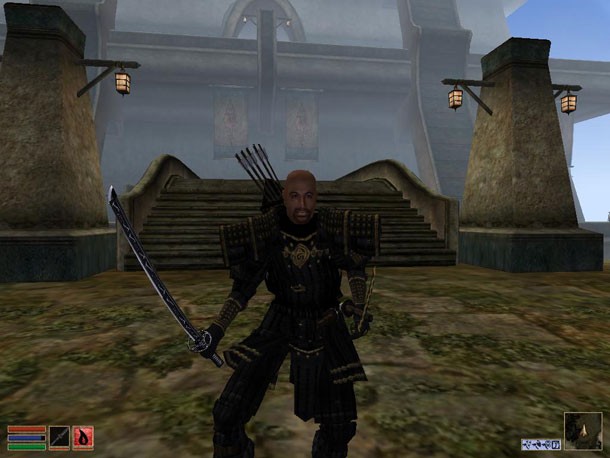Time Sinks – The Elder Scrolls III: Morrowind

"Greetings, outlander." I've probably heard that phrase a few thousand times, partially because The Elder Scrolls III: Morrowind didn't have an army of voice actors. Mostly, however, it's because it's the game I've sunk the most time into.
I missed out on the first Elder Scrolls game, Arena, but I’d played Daggerfall on PC years before Morrowind came out. Daggerfall’s open world was overwhelming to me at the time, and I spent a few days aimlessly exploring the game’s vast (and incredibly dull) world before I went back to playing Duke Nukem 3D with my friends.
In my eyes, Morrowind delivered on the promise of its predecessor – expansive character-creation tools and a big ol’ fantasy world – by making its features accessible. Vvardenfell may not have had the square footage of Daggerfall’s in-game world, but it was an interesting place to explore. And boy, did I explore it.
I’d never experienced an in-game world that felt as alive as Morrowind’s. For one, quests relied on more than simply shuffling from one mannequin to another and transferring inventory items. Take an early example. After entering the starting town of Seyda Neen and visiting a pub, you learn that one of the characters has been having problems with his extortion racket. Hrisskar Flat-Foot suspects that a Bosmer named Fargoth has been holding out on him (yes, this is a fantasy game), and he wants you to keep an eye on him. You run up to a lighthouse and wait until dark, where you see Fargoth sneak around. I remember being amazed by this particular moment – it was the closest I’d ever been to being on a stakeout, and it was unlike anything I’d ever done in a game before. Fargoth eventually betrayed his tree-stump hiding spot’s location, and I looted the hell out of it. Depending on my character, I’d then either keep the loot for myself or cash it in for an inferior reward. And then I’d head out.
The world itself was varied and full of little detours. Level scaling wasn’t a thing at the time, either, so you could easily find yourself in places where you didn’t belong. Some of my favorite memories of the game center on that feeling of being outclassed and knowing it, sneaking through remote cave systems with the hopes of finding a powerful item. My adventures took me to wild places, like Sadrith Mora, a town built in and around giant mushrooms, and the desolate wastes of the ashlands. The game’s fast-travel system was a network of giant bugs, for crying out loud!
When I played, I’d try to remain in character as best I could (nerd alert!). By the time I finished the final quests in other Elder Scrolls games, I’d typically managed to have led every possible guild and contracted a few optional diseases in the process. Not so in Morrowind. My magic user wasn’t going to set foot into the fighter’s guild, darn it, even if it meant missing out on some cool loot or a convenient place to crash.
That flexibility remains one of the reasons why I spent so much time with Morrowind. Rather than reload a save and see where alternate paths led, I’d play through the game and start over again to see. It’s no coincidence that Morrowind came out before I was married and had children. I must have put at least 100 hours into Morrowind and its expansions, Tribunal and Bloodmoon. It remains my favorite Elder Scrolls game, even though I know it’s not the best by most measurements.

Get the Game Informer Print Edition!
Explore your favorite games in premium print format, delivered to your door.
- 10 issues per year
- Only $4.80 per issue
- Full digital magazine archive access
- Since 1991









